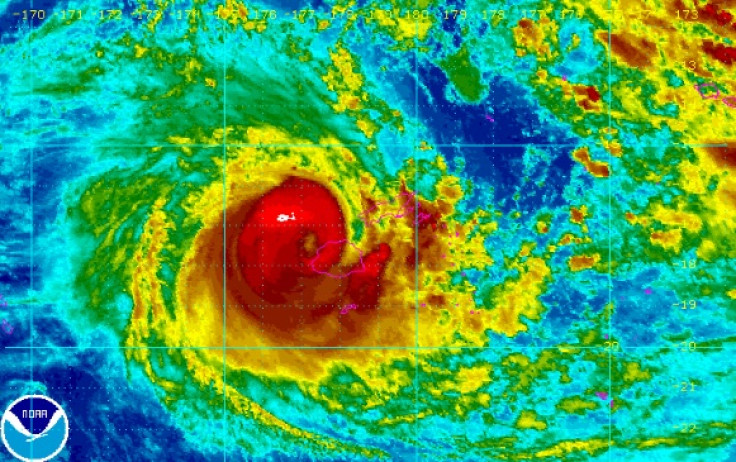Cyclone Winston: Evacuation centres set up as Fiji faces strongest tropical storm on record

Fiji is preparing for what could be the Pacific island nation's most powerful storm since records began. The cyclone is due to hit Viti Levu, the main island on Saturday, 20 February, according to meteorologists. Winston is now classified as a dangerous Category 5 hurricane – the top storm category nicknamed 'super-typhoons' – in the western Pacific Ocean.
Flights have been cancelled, with evacuation centres prepared and a nationwide curfew in place. Fiji's Prime Minister Frank Bainimarama said that his country was facing "an ordeal of the most grievous kind". He added: "We must stick together as a people and look after each other. Be alert and be prepared."
There is a major danger to lives and property in the direct path of Winston. The cyclone made landfall about 6.30pm local time Saturday near Nasau on Fiji's main island of Viti Levu, according to Accuweather.
#TCWinston ntensifies and Fiji Red Cross assisting with early evacuation in Suva @IFRCAsiaPacific pic.twitter.com/JCt1MmNrAu
— Navin Kumar Ram (@NavinKumarRam) February 20, 2016
Cyclone Winston has already reached some of Fiji's smaller islands, causing minor damage, and is expected to continue to the west through the weekend, taking the centre of the storm across Fiji, which has a population of around 900,000 people.
The most severe and life-threatening impacts will be into early Sunday, local time. Major wind damage, flooding, mudslides and coastal inundation are expected to occur during this time. Wind speeds of over 230kmph (143mph) and gusts up to 325kmph (202 mph) will lead to severe damage and extensive coastal inundation. There will be torrential flooding as well.
Cat 5 Sev Tropical #CycloneWinston approaching #Fiji. Estimated max wind gusts 315 km/h. Image: JMA/@NOAASatellites pic.twitter.com/Q9h4K0r5rz
— BOM Australia (@BOM_au) February 19, 2016
The Fiji Red Cross Society is on standby to work with the government to provide humanitarian assistance. "We are well organised and prepared for Cyclone Winston," said Eseroma Ledua, Operations Manager at the Fiji Red Cross. "We have prepositioned relief items sufficient for 12,000 people in our headquarters in Suva and have mobilised over 300 staff and volunteers across our 14 branches nationwide."
Fiji's Meteorological Office has issued a warning for heavy rains, which will likely cause flash flooding, and has requested people living in low-lying areas to move to higher ground or to the safety of evacuation centres. Coastal inundation is also likely as storm surges may push the sea inland several hundred metres, especially in areas close to the centre of the cyclone.
"The path of this storm is very unpredictable but based on our experience of responding to Cyclone Pam when it struck Vanuatu last year, we know what to expect from a storm of this severity," said Martin Faller, Director of Operations for the IFRC in Asia Pacific. "Many people will suffer damage to their homes, their livelihoods will be disrupted and in rural areas it's likely that their water supply will be disrupted. We stand ready to support the Fiji Red Cross in helping those affected."
© Copyright IBTimes 2024. All rights reserved.






